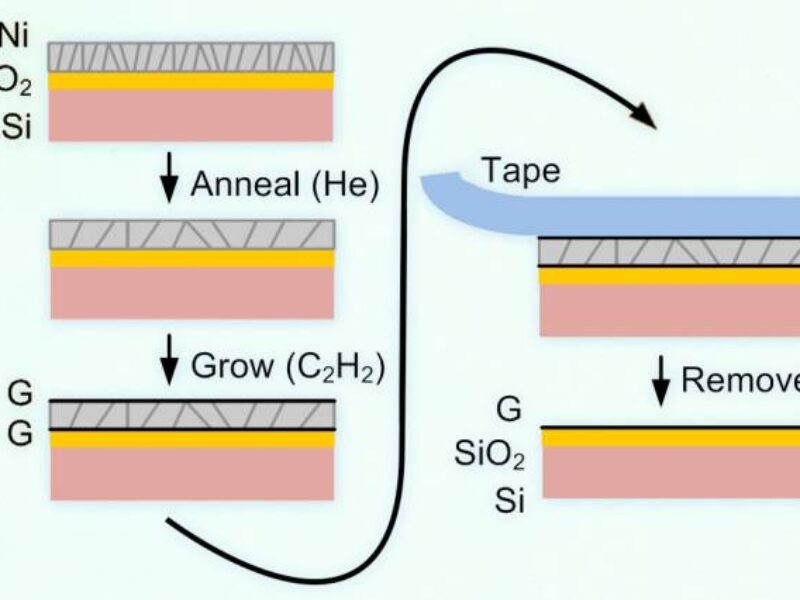
Graphene sheet production method promises to advance solar cell technology
The process is described, in a paper published in the journal Scientific Reports, by a team of nine researchers led by A. John Hart of MIT. Lead authors of the paper are Dan McNerny, a former Michigan postdoc, and Viswanath Balakrishnan, a former MIT postdoc who is now at the Indian Institute of Technology.
Currently, most methods of making graphene first grow the material on a film of metal, such as nickel or copper, says Hart, the Mitsui Career Development Associate Professor of Mechanical Engineering. “To make it useful, you have to get it off the metal and onto a substrate, such as a silicon wafer or a polymer sheet, or something larger like a sheet of glass,” said Hart. “But the process of transferring it has become much more frustrating than the process of growing the graphene itself, and can damage and contaminate the graphene.”
The new work, Hart says, still uses a metal film as the template – but instead of making graphene only on top of the metal film, it makes graphene on both the film’s top and bottom. The substrate in this case is silicon dioxide, a form of glass, with a film of nickel on top of it.
Using chemical vapor deposition (CVD) to deposit a graphene layer on top of the nickel film yields Hart said “not only graphene on top [of the nickel layer], but also on the bottom.” The nickel film can then be peeled away, leaving just the graphene on top of the nonmetallic substrate.
The result is there is no need for a separate process to attach the graphene to the intended substrate – whether it’s a large plate of glass for a display screen, or a thin, flexible material that could be used as the basis for a lightweight, portable solar cell, for example. “You do the CVD on the substrate, and, using our method, the graphene stays behind on the substrate,” said Hart.

In addition to the researchers at Michigan, where Hart previously taught, the work was done in collaboration with a large glass manufacturer, Guardian Industries. “To meet their manufacturing needs, it must be very scalable,” explained Hart. The company currently uses a float process, where glass moves along at a speed of several meters per minute in facilities that produce hundreds of tons of glass every day. “We were inspired by the need to develop a scalable manufacturing process that could produce graphene directly on a glass substrate,” said Hart.
The work is still in an early stage; Hart cautions that “we still need to improve the uniformity and the quality of the graphene to make it useful.” But the potential is great, he suggested: “The ability to produce graphene directly on nonmetal substrates could be used for large-format displays and touch screens, and for ‘smart’ windows that have integrated devices like heaters and sensors.”
Hart added that the approach could also be used for small-scale applications, such as integrated circuits on silicon wafers, if graphene can be synthesized at lower temperatures than were used in the present study.
“This new process is based on an understanding of graphene growth in concert with the mechanics of the nickel film,” explained Hart. “We’ve shown this mechanism can work. Now it’s a matter of improving the attributes needed to produce a high-performance graphene coating.”
Related articles and links:
www.mit.edu
News articles:
PERC solar cell breaks conversion efficiency barrier
Harnessing exciton fission gives solar cell efficiency boost
Four-junction, four-terminal solar cell reaches 43.9 percent efficiency
 If you enjoyed this article, you will like the following ones: don't miss them by subscribing to :
eeNews on Google News
If you enjoyed this article, you will like the following ones: don't miss them by subscribing to :
eeNews on Google News



